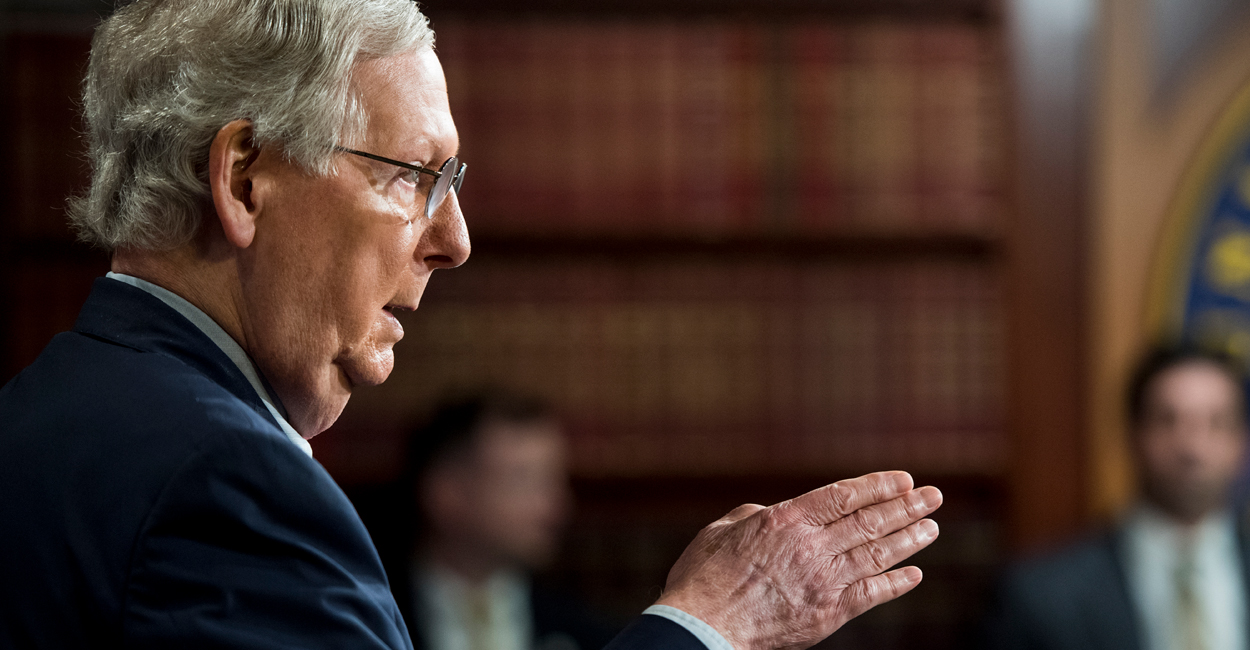With the midterm election over and the Senate of the United States firmly in the hands Conservatives, the courts will be changed for several generation to bring the constitution back into paly as the ultimate rule of law, not porgressive socialsit politics.
After the people of the great country have given the green light for the Senate Conservatives to bring back the rule of law with confirming Conservative judges to the courts, the progressive socialist liberal democrats understand that their collective fall-back position of getting legislation they couldn't get from the people from the bench, will be gone.
Ever wonder why the socialsit democrats are screaming for blood about how they are going to attack the president even after they won back the House? They are running in fear of total annellation in 2020.
Oh and what is now is really a great opportunity for Donald Trump is that Ruthie Ginsberg will soon have to retire. Talk about a cataclysmic melt down among Marxist liberal democrats.
After the people of the great country have given the green light for the Senate Conservatives to bring back the rule of law with confirming Conservative judges to the courts, the progressive socialist liberal democrats understand that their collective fall-back position of getting legislation they couldn't get from the people from the bench, will be gone.
Ever wonder why the socialsit democrats are screaming for blood about how they are going to attack the president even after they won back the House? They are running in fear of total annellation in 2020.
Oh and what is now is really a great opportunity for Donald Trump is that Ruthie Ginsberg will soon have to retire. Talk about a cataclysmic melt down among Marxist liberal democrats.
Senate Election Results Give Republicans Opportunity to Confirm More Judges Faster
The 2018 election results are encouraging, if for no other reason than that more progress can be made in filling judicial vacancies.
First, a snapshot of where things stand right now.
President Donald Trump has appointed almost 40 percent more nominees to life-tenured federal courts than the average for his five predecessors of both parties at this point. The pace of the Senate Judiciary Committee’s hearings for judicial nominees is also way ahead of the usual pace.
The Senate’s record for confirming those nominees, however, is not as robust. Previous posts (see here, here, and here) have detailed the strategies by Senate Democrats to make the confirmation process cumbersome rather than efficient.
The Senate has confirmed 84 judges, or 54 percent of his nominees, so far in the 115th Congress. That compares to an average of 73 percent of the nominees confirmed at this point for Presidents Ronald Reagan to Barack Obama.
Unfortunately, we are in the longest period of triple-digit judicial vacancies in more than 25 years. During his first two years in office, with a Senate of his own party, President Bill Clinton cut judicial vacancies nearly in half. Today, even with a Senate of his own party, vacancies are 13 percent higher than when Trump took office.
But the Senate has a great opportunity to help alleviate this grave situation.
The Judiciary Committee has already approved 32 judicial nominees, which today wait for a vote by the full Senate. Sixteen more have had a hearing and need only a committee vote to join that list.
Confirming those would bring the total confirmation rate to 85 percent of Trump’s nominees—still below Clinton’s 95 percent at this point, but on a par with Clinton in the percentage of the judiciary he had appointed during their respective first two years in office.
The 2018 election provides even more hope. Expanding the Republican majority in the Senate may also improve their majority on the Judiciary Committee, with more flexibility in achieving and maintaining the quorum needed to do business. And thanks to Democrats in 2013, ending debate on nominations now requires only a simple majority.
Expect partisan opposition to Trump’s judicial nominations to continue.
More than half of his nominees have faced various levels of Democratic opposition on the Senate floor, compared to an average of just 8 percent of the previous five presidents’ nominees facing any opposition. Of the 1,458 total votes cast on the Senate floor against Trump judicial nominees, only two came from Republicans.
Even if Democrats continue their blindly partisan approach, a larger Republican majority will ensure that Trump’s qualified judges will continue to be approved.
The 2018 election result may affect the confirmation process in another way. Different parties controlling the Senate and House decreases the likelihood of significant or comprehensive legislation on any subject. While that is not a positive prospect, at least on issues that genuinely need sound legislation, it means there will be less competition for the Senate’s attention.
The Democrats’ strategy of making each step of the confirmation process as time-consuming as possible is more effective when floor time is scarce. More floor time available for confirmations can neutralize that strategy.
Obama spent eight years appointing judges who have departed radically from the defined, modest role that America’s Founders designed for the judiciary. Trump is steadily putting the judiciary back on course by consistently appointing judges who know their proper place in our system of government and who will be impartial, rather than political, in how they decide cases.
The Senate can still make progress toward that goal in the remaining days of the 115th Congress, and the 2018 election improves the opportunity for improving the judiciary in the next two years.


No comments:
Post a Comment